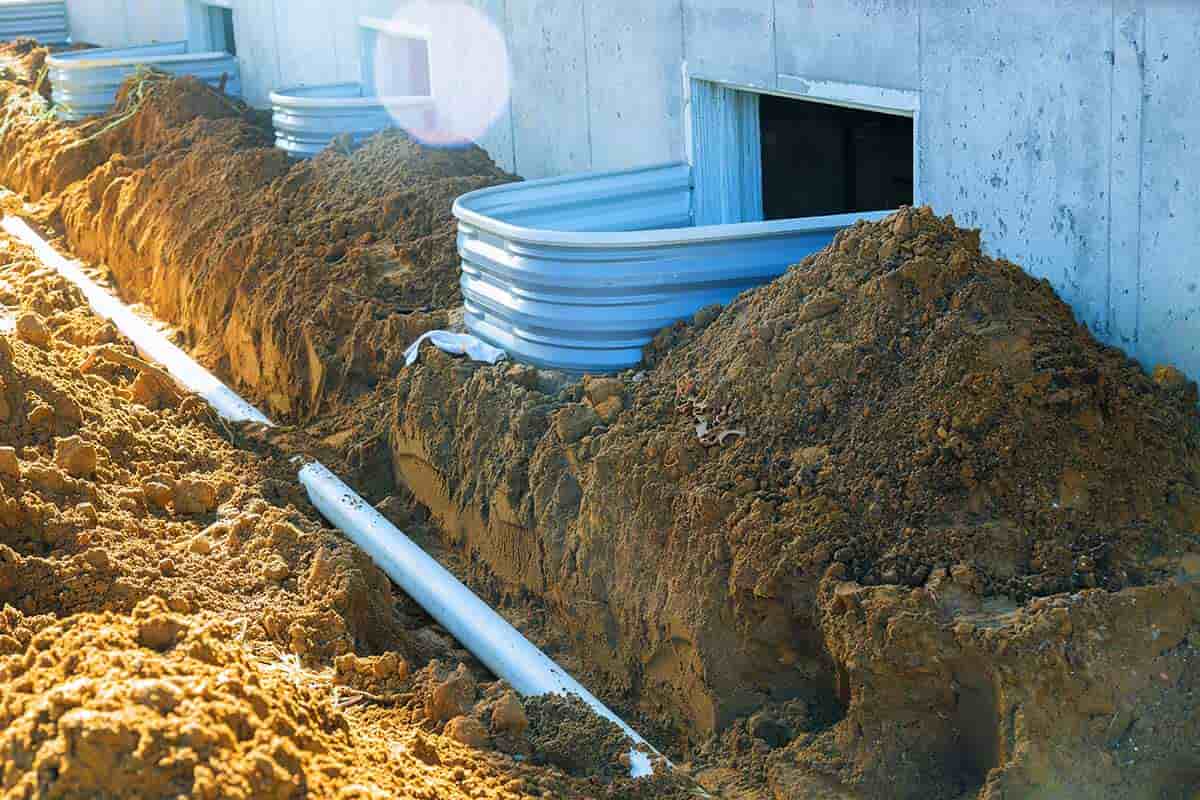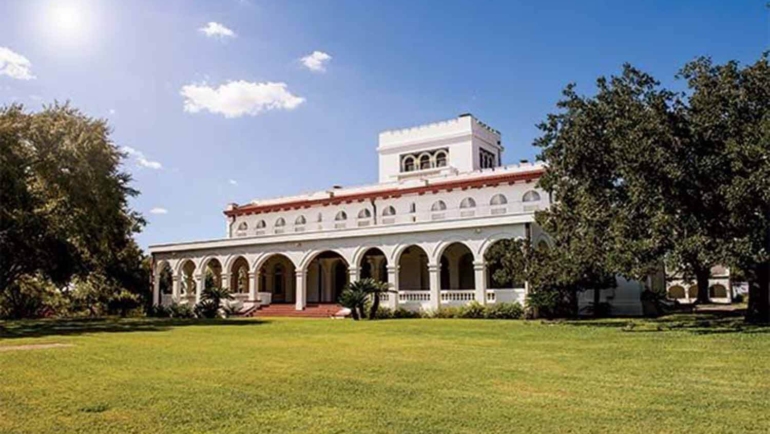Many people choose to build or buy houses to put on the land. Places outside of city limits or city septic systems often need to have their septic tank put into place with a leach field. But how much land do you need for a leach field?
The answer often varies depending on the home’s size and the tubing size within the leach field. This also changes depending on where you live. Within each state, city, or town, the size of your leach field and the septic tank could vary.
There are many things you need to take into consideration when installing a leach field. Here is everything you need to know to succeed in the installation process and make sure it is long-lasting.
Table of Contents
How Much Land Do You Need For A Leach Field?
On average, for a home, you will need at least half an acre for your septic system, which includes the leach field and the septic tank. If you have to rely on a good system on your property, the average land needed for your system is about ¾ acre.
Some areas may require at least one acre to put in a proper septic system, including the leach field. When your home is larger as well as your septic tank, you may need a larger leach field. Aim for at least about 10,000 square feet, so you have the proper drainage.
You will also need to take into consideration the percolation rate of the soil. Percolation rate is the time it takes for water or drainage to decrease minutes/inch. The percolation rate shouldn’t be too fast, but it shouldn’t be too slow. When it comes to this part of your leach field, it is best to hire a professional to discover the percolation rate on your land and go from there.
Remember that when you make a smaller drain field, you will find that your system may get backed up more quickly. This also depends on the size of your septic tank, but it is always safer to make a larger drain field.
How Long Does A Septic Drain Field Last?
Septic tanks vary in life expectancy depending on what it is made of, but a leach field can last quite long. They can even last longer than the septic tanks themselves. If the leach field is well taken care of and proper maintenance has occurred, the leach field can last up to 50 years, maybe even more.
Signs Of A Deteriorating Septic System
Although septic systems can last for almost half a century and leach fields can even last longer, storms, flooding, and other disasters can cause your septic system to degrade faster than intended. With this being a chance, here are some signs that you need maintenance completed on your septic system:
- A thick layer of sludge in the septic tank.
- Solid wastes fill more than ⅓ of the tank.
- The concrete is deteriorating.
- Your septic system seems to get backed up.
- You haven’t drained the septic tank in over a year.
If your plumbing and septic become backed up, you will need to hire someone to drain your septic tank. You will also want to look into your drain field to make sure nothing is clogged. This can cause a lot of problems, including health problems. You don’t want to leave this be for too long.
You should get your septic tank drained every year to help reduce the risks of deteriorating. You can also buy chemicals to help dissolve solid waste materials if you feel that your tank has a high level of solid waste.
How Deep In The Ground Is A Septic Field?
The septic field should be deep enough that the dirt can not be brushed away by weather or other environmental factors. You don’t want to go too deep, especially where the soil may be thicker or harder for the drainage from the septic tank.
The average drain field depth is between 18 and 30 inches, with a maximum of 36 inches. If you do go any deeper, the leach field won’t do its job, and your septic tank will quickly become fuller.
Can I Plant A Garden Over My Septic Field?
Planting a garden over your septic field is possible, but it needs to be done with caution and with the utmost care. You don’t want roots going too far below and breaking the tubes you lay down for the leach field.
You may want to consider drought-tolerant plants as well because they do not require a lot of irrigation, and their roots won’t reach deep enough to tamper with your leach field. Try to avoid any water-loving plants and avoid trees near your leach field. These roots can clog and ruin your leach field.
Here are some plants that you can consider when you are decorating the leach field:
- Dogwood trees
- Japanese maple trees
- Cherry trees
- Azalea shrubs
- Boxwood shrubs
- Holly shrubs
- Different types of grasses.
- Lily of the Nile
- Ornamental onions
- Dahlias
- Common Hyacinth
If you don’t have a lot of space and would like to plant a garden, you may want to look at a simple ground cover. These roots don’t go too deep and won’t entangle themselves in your leach field.
If you choose to do a vegetable garden, you may want to consider making it a raised garden. Vegetable gardens often need to be raised to help with drainage, but this will also be safer for your leach field. Try to plan any deeper or taller vegetables that aren’t over your leach field.
If you do have enough acreage to plant your vegetable garden elsewhere, then choose a different area. Making a vegetable garden over your leach field is not recommended because the roots often mess with the leach field, and the ground isn’t the best for vegetable gardens.
You can choose to do alternative places and styles besides a vegetable garden on your drain field. You can make a beautiful garden off the ground near your home. This will protect your drain field and give you the vegetables you want.
What Other Uses Can A Leach Field Area Be?
The best coverage for your leach field is grass. It keeps from erosion occurring, and the roots don’t reach too deep to disturb your leach field. You can use it for many other uses than just a place where your septic tank will drain.
Here are some ideas to convert the area over your leach field:
- Make it a play area for your children.
- A small rock garden with drought-tolerant plants.
- Make a flower garden with non-woody ground covers and shallow-rooted shrubbery.
You can have the area be a play area where your children ride their bicycles. Try not to build too big of a structure over the leach field. Any deep digging will disturb the leach field, and you don’t want to install heavy objects like a playground or pool that can disrupt this area.
What Shouldn’t You Have Over Your Leach Field?
There are many things that you shouldn’t have in your leach field. Anything that is heavy or you have to dig into the earth will disturb the leach field. It is best that it is clear of obstruction and there are no large roots that would clog the drains.
Here are some things to stay clear of:
- Pools
- Playgrounds
- Vegetable gardens
- Trees
- Install ponds.
- Cover with cement.
- Create walkways or high traffic
- Fencing
- Plant trees
You don’t want this area to have increased foot traffic. This will cause the soil to get compacted and may clog your leach field. You don’t want to cover the leach field either with heavy objects, machinery, buildings, and so on. It can disrupt the drainage and make things worse for you.
Where Should The Leach Field Be Installed?
The leach field is the area that your septic tank will drain. It allows the water to leave the septic tank and go into the ground. There are no mechanical parts to help with this process, and most of the time, you will use a well-drained area where gravity can do its work. Here are some considerations:
- Choose a low elevation area.
- Pick an unused area.
- Find an area that easily drains.
- Make sure it’s easily accessible.
Choose A Low Elevation Area
Choose a place with a low elevation area. Utilize gravity to help you with the drainage of water from your septic tank. This will only make your leach field and septic system last longer, and you will less likely have issues with blockage.
The leach field should be lower than the septic tank so that the water can drain out. It is best to do it down a hill from the septic tank. You won’t have to deal with sewage backup or worry about your septic tank becoming full too quickly when you do this.
Pick An Unused Area
You will want to find an unused spot. You don’t want an area where you will be building any structures or plan to put things like a swimming pool. This area should have a low traffic area. If it doesn’t, you may need to look into another area to put your septic field.
Find An Area That Easily Drains
When you are searching for a location, make sure you choose an area that drains well. You don’t want to put your leach field in an area that turns into a small pond when it rains. This can back up your system and be more of a hindrance rather than useful.
Make Sure It's Easily Accessible
Make sure the area is not hard to get. You don’t want to have to go through a forest just to get to your leach field. If this is the case, there is a chance that the surrounding trees could or will clog the leach field and cause a backup. You want to be able to get to it if something does occur.
Outro
Your leach field can change in size depending on many factors: the size of the house, size of family, size of septic, available area to dig, and more. Take all these calculations into consideration when you lay your leach field.
Some things may differ from what you thought, but you will know what is best for you. If you feel like you may not have the skills to install your leach field, hire a professional, and they can look into it for you.



